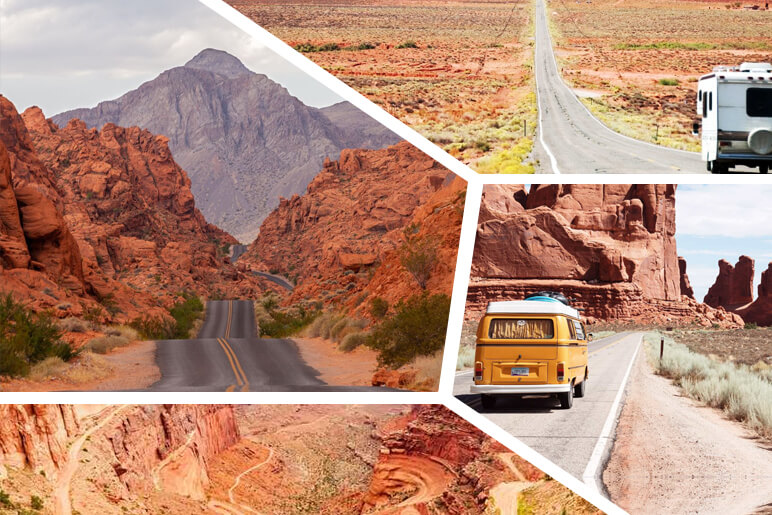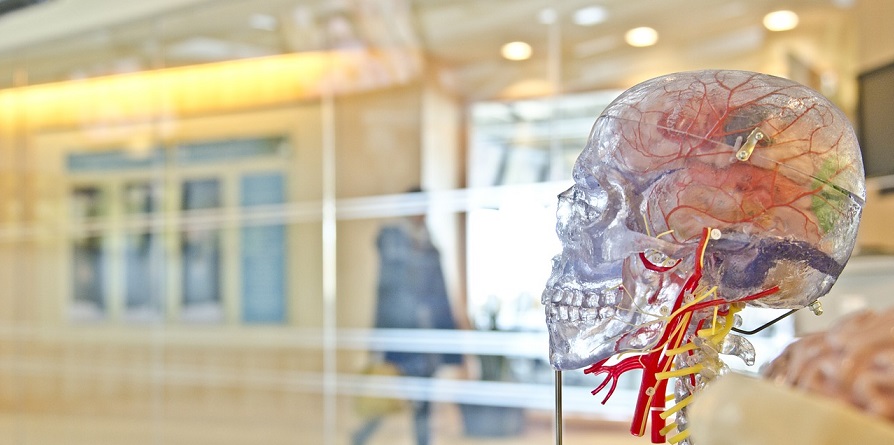After serious of terrorist attacks, Turkey here it goes again as a tourist attraction. Turkey has a very unique geographical location on the globe, lying partly in Europe and partly in Asia. It unite and divide the two continents. Turkey is situated at the crossroads of the Balkans, Caucasus, Middle East, and eastern Mediterranean. It is among the larger countries of the region in terms of territory and population, and its land area is greater than that of any European countries. Turkey is bounded on the north by the Black Sea, on the northeast by Georgia and Armenia, on the east by Azerbaijan and Iran, on the southeast by Iraq and Syria, on the southwest and west by the Mediterranean Sea and the Aegean Sea, and on the northwest by Greece and Bulgaria. The capital is Ankara, and its largest city and seaport is Istanbul. Turkey has a blend of Asian and European Culture. Most of the land of the country is mountainous. Steep slopes are common sites and 4454 miles of coastline.
Turkish is the first language of the majority of population, a section of population follow Kurdish and minority follows Arabic. Majority of the population is Muslim yet it is declared as secular state with Jews and Christians.
Climate:
Turkey has noticeable variety of climates. Coastlines of Black sea are wet with rainfall throughout the year. Frosts can occur, winters are mild and summers are very hot. Mediterranean coastlands have very dry summers and winters are mild and rainy. The interior has a continental climate, with cold and snowy winters, and hot and dry summers, though nights remain usually cool. Summer is dry and sunny throughout the country, except on the north-east coast. In all the inland and south-central regions, the driest months are July, August and September.
Most of the coastal areas have a high level of humidity during most of the year which makes hot weather feel hotter and cold weather feel colder than it is.
Culture and customs:
Turkey is a blend of European and Asian culture. It’s a mix of East and west. Majority of the population follows Islam as religion yet the country has a secular affair. Turks when meet with others they shake hand firmly. Friends and relations greet each other with either one or two kisses on the cheek. Elders are always respected by kissing their right hand then placing the forehead onto the hand. It’s customary to greet the most elderly or most senior first. Asa respect. At social occasions they first greet the person closest to them. Greet people with either the Islamic greeting of 'Asalamu alaykum' (peace be upon you) or 'Nasilsiniz' (How are you? pronounced na-sul-su-nuz). Other useful phrases are'Gunaydin' (Good Morning, pronounced goon-ay-dun), 'iyi gunler' (Good Day, pronounced ee-yee gun-ler) or 'Memnun Oldum' (pleased to meet you). They prefer dinning together than exchanging expensive gifts.
Food
Turks enjoy food they find best relaxation at meal time. Turkish cuisine is inherited from Ottoman cuisine. They eat rice, vegetable stews, eggplant, stuffed dolmans and fish. Coastline population consumes fish very extensively in the meals and the cooking is done in olive oil as olive trees grow in abundance. A specialty for breakfast is called menemen, which is prepared with tomatoes, green peppers, onion, olive oil and eggs. Invariably, Turkish tea is served at breakfast.
Turkish cuisine has a range of savoury and sweet pastries. If someone has to visit Turkish host, best gift to carry is pastries.
The food that must be tries in Turkey are:
1. Menemem: it’s a breakfast dish coming as a Turkish Tradition, it includes eggs, tomato, green peppers and spices and other sautéed vegetables cooked in olive oil. It is served with bread or rice.
2. Manti: The dish carried by nomads, lamb dumplings boiled or fried with yogurt and spices. It is hot dish served with cold yogurt. Some of the pleasing places to order mantı are Casita Mantı Nişantaşı (Şişli), Fıccın (Beyoğlu), Emek Mantı (Yeniköy), Bodrum Mantı (Arnavutköy), and Aşkana (Ulus) in Istanbul.
3. Kofte: It consists of minced lamb, mutton, veal or beef, or a mixture of some of these meats with herbs and grilled.
4. Kuzu Tandir: Meat is cooked in slow flame and it is served with rice and potatoes.
5. Lahmacun: Bread topped with minced meat, salad and lemon juice, it is wrapped rolled folded. Its very inexpensive and a favourite street food.
6. Borek: It’s a baked filed pastry. It has been the favourite baked food since Ottoman Empire.
7. Baklava: It’s a Turkish dessert, dough with nuts filling and butter is baked and soaked in syrup This dessert is favourite among the wealthy families
8. Pide: It is a boat-shaped flatbread served with a variety of toppings, often minced meat or spinach and cheese. It’s an absolutely classic staple in Turkey.
9. Durum: It is a wrap that is usually filled with typical döner kebab ingredients. The wrap is made from lavash or yufka flatbreads.
10. Künefe: It’s a traditional Arabic dessert. it is made with thin noodle-like pastry, or alternatively fine semolina dough, soaked in sweet, sugar-based syrup, and typically layered with cheese, or with other ingredients such as clotted cream or nuts, depending on the region. It is basically cheese pastry.
11. İskender Kebab: This dish got the name from its creator İskender Efendi(Master Alexander), who lived in Bursa in the late 19th century Ottoman Empire. It’s one of the popular meat dish. It is a kind of döner kebab prepared from thinly cut grilled lamb or beef basted with tomato sauce over pieces of pide bread and generously slathered with melted butter and yogurt. It’s a unique dish may be due to its chopping style, it has a very different taste and a different experience to the taste buds.
12. İmam Bayıldı: An Ottoman cuisine, whole of eggplant cook in olive oil stuffed with onion, garlic and tomatoes. It’s a vegetarian delight, healthy and light on calories.
13. Döner: Again a non vegetarian dish,made of lamb,beef or chickencooked with local herbs and spices. It is a street takeaway food, eaten in the form of a sandwich. it is one of Turkish variety of kabab.
14. Mercimek Köftesi: it is one of the most common appetizer. Vegetarian dish of red lentils and bulgur.
15. Mozaik Pasta: it’s a chocolate cake made with chocolate sauce and crushed biscuits. It’s a Turkish café delight.
16. Su Böreği: Another snack with lots of butter. It’s a kind of Pastry served in plate at breakfast.
17. Baklalı Enginar: Artichoke with lemon and oil served with beans. It’s a light fresh summer dish. A Turkish Summer delight dish.
18. Kayısı Tatlısı: Apricot stuffed with cream and nuts. A Turkish dessert to treat your taste buds.
19. Pilav: It is the basic and very foundation meal of Turkey. This food will be served as roadside street food and in big star hotels. Pilav, commonly referred to as as pilaf. It is made of rice includes vegetables, chick peas, beans etc.
20. Şiş Kebab: Sis means sword. Kebab means roasted meat. Meat is roasted in a stick. Kebab in any form fascinates the taste buds of Turkish.
21. Lokum: It’s a Turkish delight served with variety of flavours and powered with sugar. The flavours are chopped dates, pistachios, and hazelnuts or walnuts bound by the gel, rosewater, mastic, Bergamot orange, or lemon. The confection is often packaged and eaten in small cubes dusted with icing sugar, copra, or powdered cream of tartar, to prevent clinging.
22. Salep: A winter warm drink to give different experience to the taste buds. The healing power of salep comes from glucomannan, which heals respiratory problems like bronchitis and cough. It empowers the heart and the mind, stops diarrhea and warms up the body. Especially if it’s consumed with ginger and/or cinnamon, its effect is amplified.
23. Boza – One of the Oldest Turkish Drinks
Boza is one of the oldest Turkish beverages, and is made from fermented grains. It contains nutritious values like protein, calcium, iron, zinc, phosphorus, thiamine, riboflavin, and niacin. It gives your stomach a full feeling, so it’s better not to drink boza during or right before your meal. During the winter you can find boza almost everywhere: in supermarkets, patisseries and cafes
24. Turkish Coffee: Coffeehouses to be found everywhere in Turkey. In Turkey, Coffee house is a place where men gather to socialize, talk politics, and play backgammon over cups of tea and coffee. In olden days a potential husbands would judge a woman by her Turkish coffee-making skills. Even today, when a prospective husband’s family asks for the girl’s parents for her hand in marriage, Turkish coffee is served by the bride-to-be. Turkish coffee’s special preparation, brewing techniques, and rich communal culture made it worthy of being inscribed in 2013 into UNESCO’s Intangible Cultural Heritage List. Turkey’s most popular purveyor of Turkish coffee is Kurukahveci Mehmet Efendi.
25. Turkish Tea: People admire tea a lot. A hot summer day, a cold winter day, a visit to family or friends, a quick way to relax and especially a full breakfast, tea will be part of it. Tea here is mostly black with little sugar or no sugar. aykur is the oldest company that produces tea in Turkey. There are also younger and equally successful ones like Doğuş.
Places to visit
1. The City Of Ephesus
It is the most important Greek city in Asia Minor . The ruins lies near modern city of Selcuk in western Turkey. The city was established as most important commercial centre as a port in ancient times. In 2015 Ephesus ancient city is added in the UNESCO World Heritage List. There is a marvellous city covering nearly 1600 hectares in Selcuk town, having millions of visitors each year from all around the world. Ephesus survived multiple attacks and changed hands many times between conquerors. It was also a hotbed of early Christian evangelism and remains an important archaeological site and Christian pilgrimage destination. Excavations have revealed grand monuments of the Roman Imperial period including the Library of Celsus and the Great Theatre. Little remains of the famous Temple of Artemis, one of the “Seven Wonders of the World,” which drew pilgrims from all around the Mediterranean. It’s a testimony to the Roman Imperial and early Christian period which is reflected in the monuments. It’s a place to visit if you’re fascinated with historical monuments and great pieces of planning and architecture of the city.
2. Istanbul
It was known as Constantinople and ancient Byzantium and it is the largest seaport in the country. The city as founded around 1000 B.C. The city is a great tourist attraction with lost monuments, attractive moseques, churches, museums etc.
Exploring Istanbul
A. Aya Sofia (Hagia Sophia): It’s a beautiful artefacts and it is the only building that served to three different religion Pagans, Christian and Islam. Now in Turkish present time it is serving as Museum. It’s a very fascinating site for History and Art lovers. It was built three times in different time zones. It was first built as a big Church. It was the biggest operational cathedral in the city throughout the Byzantine period. The first church was constructed by Emperor Konstantios in 360. The second church was reconstructed by Emperor Theodosios II in 415 Church was demolished and reconstructed by Emperor Justinianos’s. The church was damaged in 13th century by Latins. The building was renovated as mosques Mehmed in 1453 when the place was taken over by Ottoman Empire. In 1935, the building was converted into a museum and now it is the second most visited museum of Turkey
The winter visiting hours for the Hagia Sophia are from 09.00 to 17.00, with the final entry being at 16.00. During the summer, the visiting hours are between 09.00 and 19.00, with the final entry being at 18.00.
B. Blue Mosque (Sultan Ahmet Camii in Turkish)
The mosque gets its name from the blue titles in its interior design. Mosque was built between 1609 and 1616 years, during the rule of Ahmed I. Historical mosque is a great tourist attraction, it is closed every day for non-worshippers for five times daily prayer. The west view of the mosque is from its west side, the Hippodrome. There is market called Arasta Bazaar to buy quality souvenirs and handcraft stuff. It is located just behind the mosque and it’s a great place for shopping.
C. Topkapı Palace (Topkapı Sarayı)
The palace was constructed in 1460 as a residence for Ottaman sultans, In 1850 the residence was inadequate for Sultans. In 1924, the palace was converted to a museum. Topkapı Palace is built atop the Byzantine acropolis on Sarayburnu at the tip of the Istanbul peninsula. It is surrounded by the Sea of Marmara, the Bosphorus and the Golden Horn. The palace covers an area of approximately 700,000 square meters, a major part of which area is set aside for the Royal Gardens.
The museum is closed on Tuesdays.
D. Basilica Cistern (Yerebatan Sarnıçı)
It is the tourist great attraction for its magnificent historical cisterns. It's also called the Sunken PalaceCistern. Cisterns, which generously provided for the water needs of the people during periods of drought were used for many purposes during the history such as silk and lemon warehouses or a shelter after they were drained. The place was made to stock up water for the city.
E. Hippodrome
It is located in the square of blue mosque, built by Septimius Severus to entertain the public at the beginning of A.D 2 th century. It was the sporting and social centre of Constantinople, capital of the Byzantine Empire Hippodrome has witnessed many events such as the famous gladiator fights, chariot/car races, many riots and bloody events in the past. Today much of it is not available, gallery wall on the southern side can be seen.
F. Istanbul Archaeology Museum
Istanbul Archaeology Museum is a group of three archaeological museums located in the Eminönü district of Istanbul, Turkey, near Gülhane Park and Topkapı Palace. he ornate Alexander Sarcophagus is among the most famous pieces of ancient art in the museum. he museum has a large collection of Turkish, Hellenistic and Roman artifacts, Ottaman coins and seals .It is closed on Monday.
G. Süleymaniye Mosque
It was built by the legendary architect, Mimar Sinan, it is known as one of his masterpieces, and his largest design. Its interior is beautifully decorated and a fascinating tourist attraction for its massive size. The beautiful Suleymaniye Mosque is a fitting tribute to both the sultan and the architect. It is located in the historic old peninsula. It is close to a number of other sights including the Grand Bazaar, Spice Bazaar, Rustem Pasha Mosque, and New Mosque. Topkapi Palace and the Blue Mosque. It is open on all days, closed during prayer times.
3. Ankara
It is the capital of Turkey and second largest city and quite similar to Istanbul. It’s a very old historical city. Remains of architectural pieces of Roman and Ottaman culture can be seen throughout the city and most remarkable being the Temple of Augustus and Rome. Ankara has a hot-summer Mediterranean climate. Research and excavation work says the oldest settlement here was of the Bronze age. Ankara is famous for the Monumentum Ancyranumemple of Augustus and Rome) as the city was also under the control of Roman Empire.
The main sites that worth touring are:
A. Ankara Citadel- castle built by Romans
B. Roman Theatre
C. Temple of Augustus and Rome
D. Roman Baths
E. Roman Road
F. Roman Road
G. Kocatepe Mosque
H. Ahmet Hamdi Akseki Mosque
I. Alâeddin Mosque - The oldest Mosque in the city
J. Hatti Monument
K. Anıtkabir Museum
L. War of Independence Museum
Visitors can shop from old shops,the fine fabric traditional Islamic dresses, high quality carpets, dry fruits, antique jewellery and other stuff.
It’s a center for the performing arts, home to the State Opera and Ballet. Many Theatres can be found in the city.
4. Konya
The ancient city existed here was during the Copper age which we can say around 3000 BC. This city was the major airbase during the war of Independence in 1922. It was the final home for Rumi. It’s a pilgrimage destination for Sufis.
Must see sites
A. Mevlana Museum/Mausoleum of Rumi - The tomb of the famous Mawlana Jalal ad-Din Muhammad Balkhi-Rumi. Museum Of Rumi is another fascinating site, displaying relics of his times.
B. Sille: It is a 7000 years old village as per the historic records.Its a must see site in Konya.
C. Iplikçi Mosque
D. Alaaddin Hill - An artificial hill built by Seljuk Sultan Alaaddin Keykubat
E. Japon Park - A friendship park built by Japanese and Turks.
F. Saint Paul Catholic Church The only surviving church in the city.
5. Cappadocia
The place attracts its attention for its natural wonders, Fairy Chimneys and heritage culture, underground cities, cave churches and the hot air balloon ride Cone shaped formations have been created by volcanoes .The place has continental climate, hot dry summers and snowy winters. Hot-air ballooning is very popular in Cappadocia and is available in Goreme. The Göreme Open Air Museum is the most visited site.
The places to explore
A. Underground Cities: There are 36 cities under the rock surface of the place.Its was used as hiding place from winters then it was used by Christians to escape from Roman.
B. Goreme Open Air Museum: It is one of the UNESCO World Heritage Site .
C. Pasabag (Monks Valley): It is famous for fairy chimneys.The natural chimneys erupted out from volcano.
D. Devrent Valley: It is known as imaginary valley,the rock formations are like wild animals.
E. Pottery Kebab: The local delicacy,can be found in every restaurant.It is also called clay pot meal.
F. Hot Air Balloon: A mesmerizing experience to see unique landscape from air.
G. Turkish Night: Belly dancing,fascinating traditional costumes and cuisines.
H. Horse Riding
I. Cave Hotel
J. Pottery And Ceramics Shop In Avanos
A unique Experience - Whirling Dervishes performances-the sacred dance
The unique religious dance to express emotions and love of God. It has origin in Turkey by Islamic sect-Sufi, founded by Mevlana Jalaluddin Rumi. It originated in 13th century and the dance is known as Sema. It is performed by semazens (whirlers) that belong to the Mevlevi sect of the Sufi.The Dervishes form a circle wearing long cylindrical black hats and wears long white flary dresses. The dance is about revolving to the soft music of flute on the verses by Rumi. The idea behind revolving is God is everywhere around east to west and west to east.
This is the must watch and experience thing if you are touring Turkey.
It can be experienced at Hodjapasha Dance Theater in Istanbul. This is UNESCO-listed ceremonial dance. Its
1.5 hour captivating performance.
Turkey is the place to explore ancient times, culture and it's heritage.









